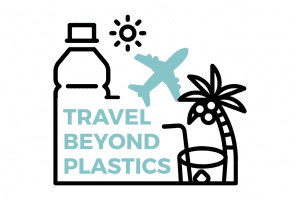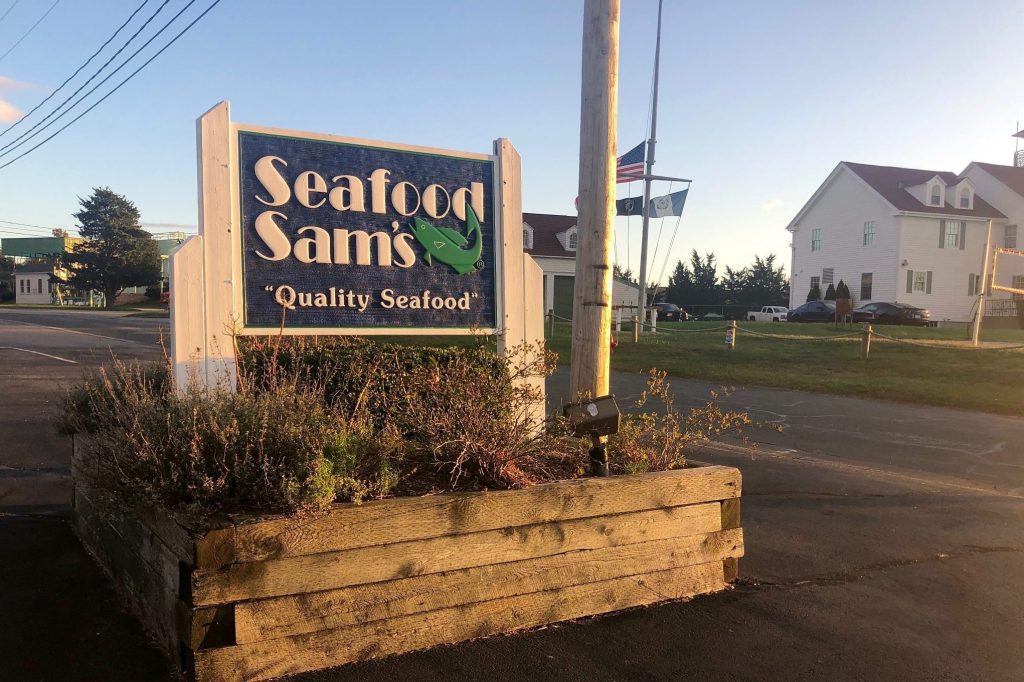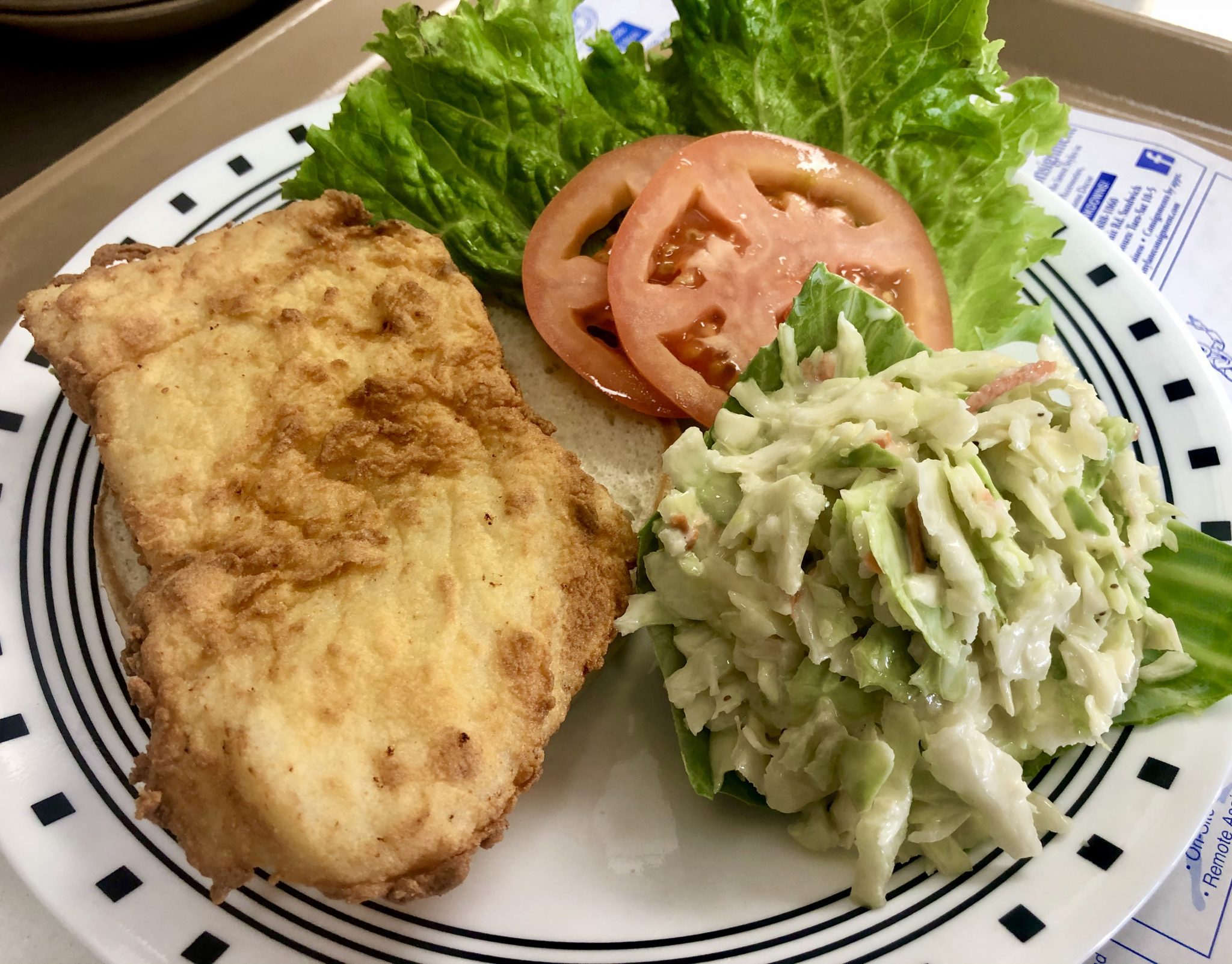Skift Take
Restaurant owner Jeff Lewis decided to eliminate disposables, even though some customers grumbled. Now vendors are bringing him ideas.
 Travel Beyond Plastics is a groundbreaking new Skift series about the travel industry’s addiction to plastics and what happens when companies and travelers try to kick this unsustainable habit.
Travel Beyond Plastics is a groundbreaking new Skift series about the travel industry’s addiction to plastics and what happens when companies and travelers try to kick this unsustainable habit.
Millions of travelers descend on Cape Cod, Massachusetts, each year, and many want to eat the same thing: seafood.
One place they head is Seafood Sam’s in Sandwich, located near the scenic Cape Cod Canal and the iconic Sagamore Bridge.
On a peak summer travel day, Seafood Sam’s serves as many as 3,000 people. They fill the 350 seats inside and 100 seats on the deck, dining on lobster roll, fried clams, and baked haddock.
Until three years ago, they got their food on, or in, disposable dinnerware.
Platters of seafood and fries came on paper plates. Chowder came in Styrofoam cups, Coleslaw in little plastic cups, and carryout food was packed in Styrofoam boxes. All of it was eaten with plastic utensils.
Then, 25-year-old Timothy Lewis went to his dad, Jeff, the restaurant’s owner. “’We’ve got to stop this,’” Jeff Lewis recalled his son saying.
The elder Lewis, a fan of documentaries like the BBC’s Blue Planet series, said he was convinced both by environmental concerns and economics.
“Ninety percent of what we sell is seafood,” said Lewis. “We thought it was hypocritical to sell seafood on plastic that’s going to end up in the ocean and wind up killing what we sell — if we can get it anyway. It’s not a good look.”
Lewis started with the dining room. He replaced disposable plates and cutlery with china and metal utensils. He installed a dishwasher in the kitchen, then set out plastic tubs so that customers could return their items after they ate.
The move wasn’t immediately popular.
“People didn’t want to bus their own dishes and clean them off,” Lewis said. He wasn’t deterred. “You always have a few grumpy customers that don’t like change. They did get used to it. Now’s gone the other way. They love it.”
The impact was immediately apparent. “We used to go through four or five dumpsters of trash a week. Now that’s down to two,” Lewis said.
He estimated that he incurred “tens of thousands” of dollars in dining room costs, where the average check is about $25 per person.
“We were spending $1,200 to $2,000 an order just on plastic silverware,” Lewis said. “The dishes and the silverware are all reusable, so that takes care of that cost.”
And, he said, “The food looks 1,000 times better on the plate.”
Carryout costs are higher, though. Styrofoam boxes used to cost him 12 cents each; compressed paper boxes are 35 to 40 cents each and don’t keep food hot as long, Lewis said.
That’s especially apparent with soups like clam chowder, fish chowder, and lobster bisque. “You put chowder in paper, you might get an hour,” he said, compared with up to five hours for Styrofoam cups.
But, said Lewis, “You shouldn’t be eating it an hour later anyway. I have a problem with takeout seafood anyway — you pick it up and get it home and it’s good for 10 minutes.”
Work in Progress
The shift from conventional plastic has been trial and error. Initially, Seafood Sam’s packed coleslaw in corn-based plastic cups, like those used by many coffee bars and even on Amtrak.
But Lewis realized the cups only counted as sustainable if they could be composted, and he does not have recycling service available from his trash disposal company. That meant they just ended up in the trash.
So the restaurant decided to serve coleslaw on cabbage leaves instead. It also had to adjust when it began using substitutes for plastic straws.
That meant an immediate cost increase; plastic straws cost a penny apiece, while paper ones run three to four cents each., and Lewis bought boxes at a time.
Meanwhile, some customers complained that the straws disintegrated. A vendor, however, came up with an alternative.
“One of our purveyors said, ‘I found these straws in Italy and they’re like pasta,’” Lewis said. “So we’re going to try that next.”
Lewis is having a much easier time than pioneers in the anti-plastics movement, said veteran Chicago restaurant owner Ina Pinkney, now a Chicago Tribune columnist.
Her busy restaurant, Ina’s, tried a similar approach when it opened two decades ago, long before single-use plastics had become the global concern that they are today.
She searched far and wide to find biodegradable paper carryout containers.
“There was never a moment when I considered Styrofoam or aluminum,” said Pinkney. “I found a small supplier and paid top dollar.”
Her customers, which included locals and tourists, expressed surprise, but became converts to the idea, Pinkney said.
She was, however, unable to find alternatives to plastic straws and utensils.
Trailblazers
But in 2009, Pinkney and fellow restaurant owner Dan Rosenthal conceived the Green Chicago Restaurant Coalition, negotiating bulk prices on paper boxes and cornstarch-based utensils to bring down costs.
The coalition, now called Next Bites, has projects across the city.
Lewis said restaurants will have to change. “We can’t keep going the way we’re going,” he said. “We can’t keep using products that don’t break down.”
He remembered going out as a boy with his friends to dig up glass bottles, which they kept as souvenirs and sometimes sold.
“You talk about leaving a legacy. What are kids going to do now — dig up plastic cups?”
Lewis said in 2019 his business was the best it’s ever been and that the cost of embracing plastic alternatives has “been a wash,” given the volume he does.
Lewis isn’t sure whether his steps will work for other restaurants, but added, “You have to start somewhere. We try not to make decisions based on profit. We try to do them because it’s the right thing to do.”
The Daily Newsletter
Our daily coverage of the global travel industry. Written by editors and analysts from across Skift’s brands.
Have a confidential tip for Skift? Get in touch
Tags: travel beyond plastics
Photo credit: Cape Cod restaurant Seafood Sam's in Sandwich, Massachusetts, eliminated disposable dinnerware in 2016. Micheline Maynard / Skift

